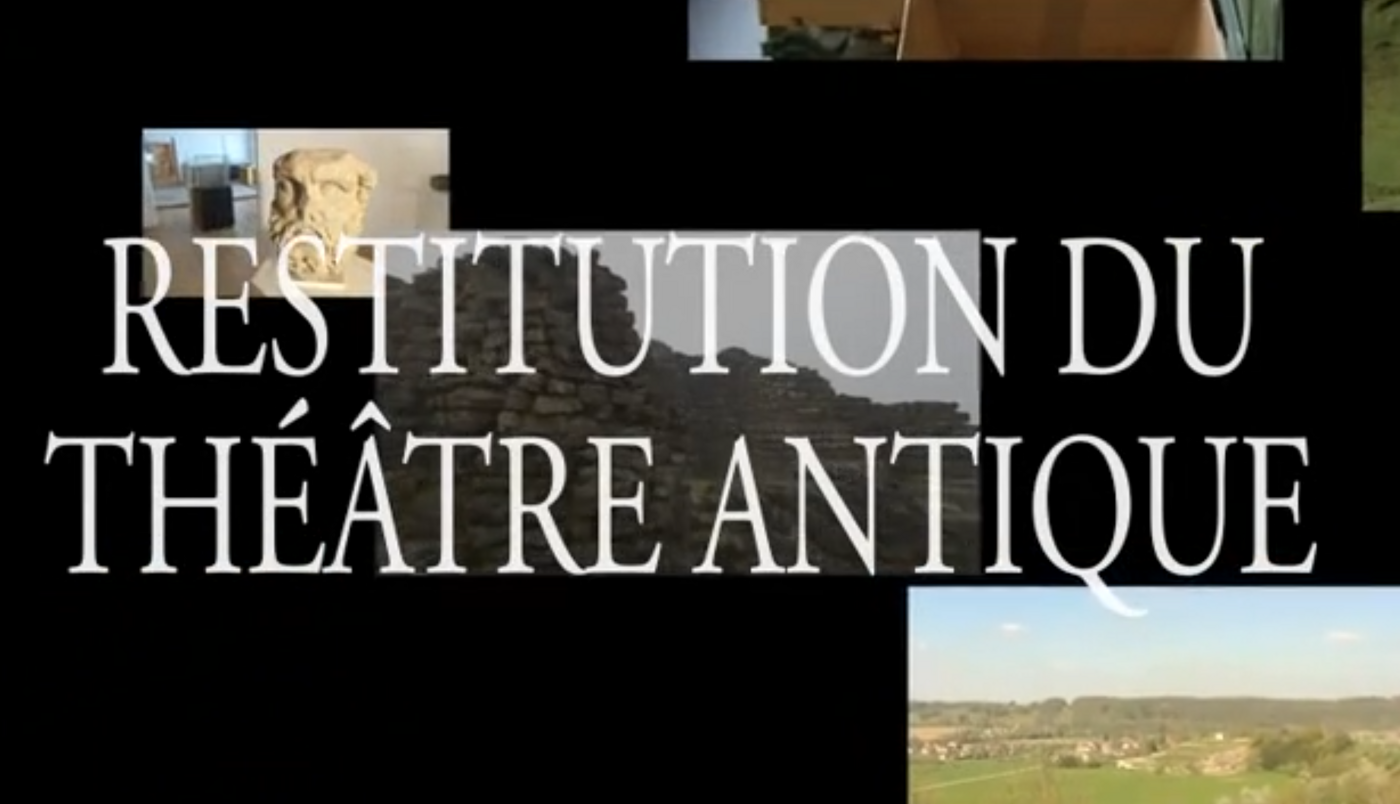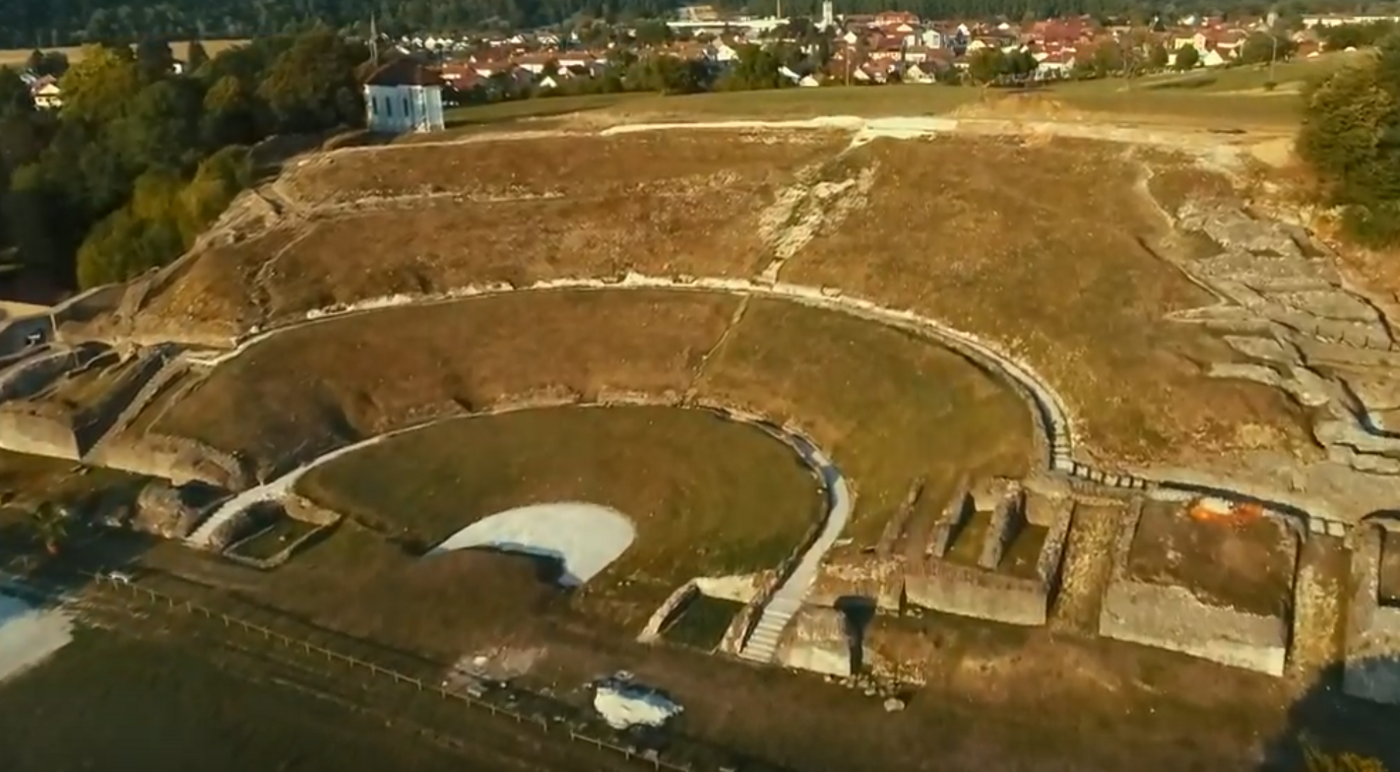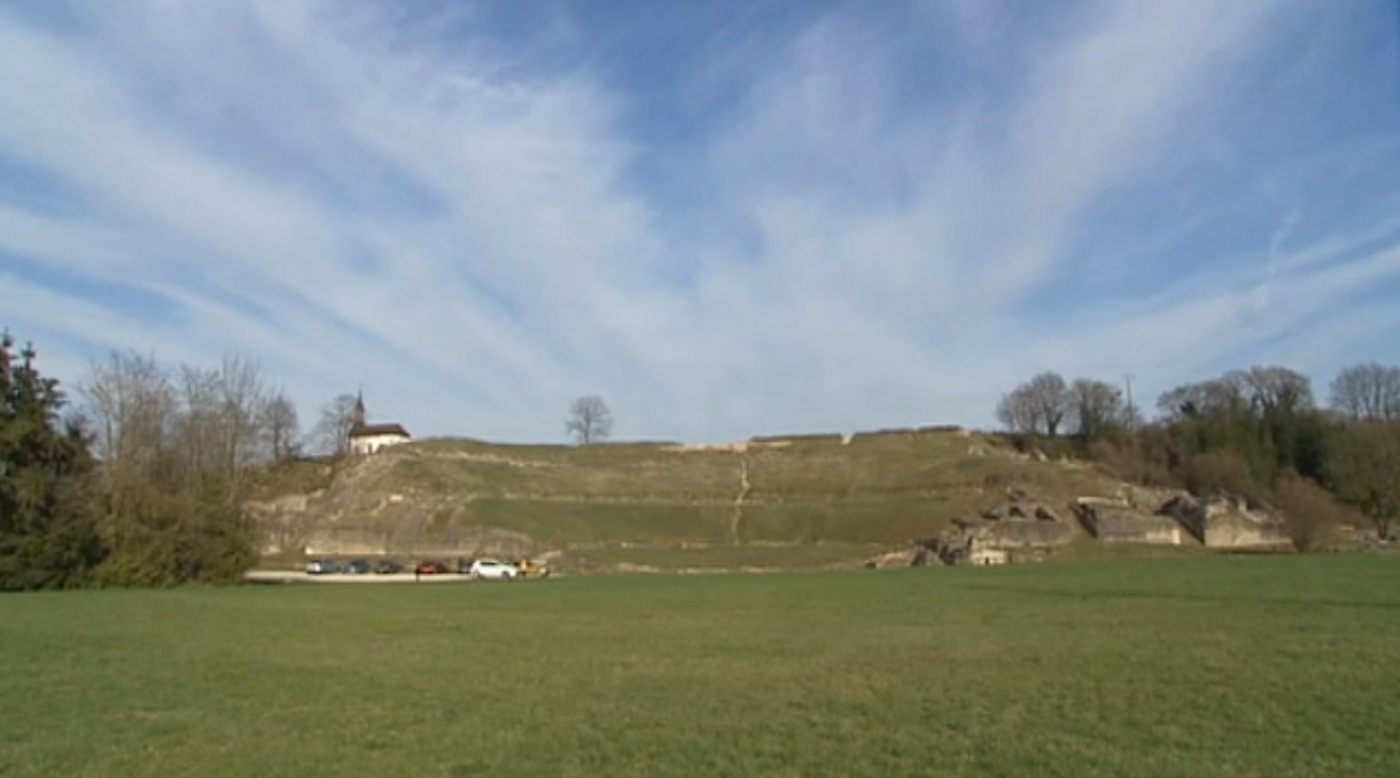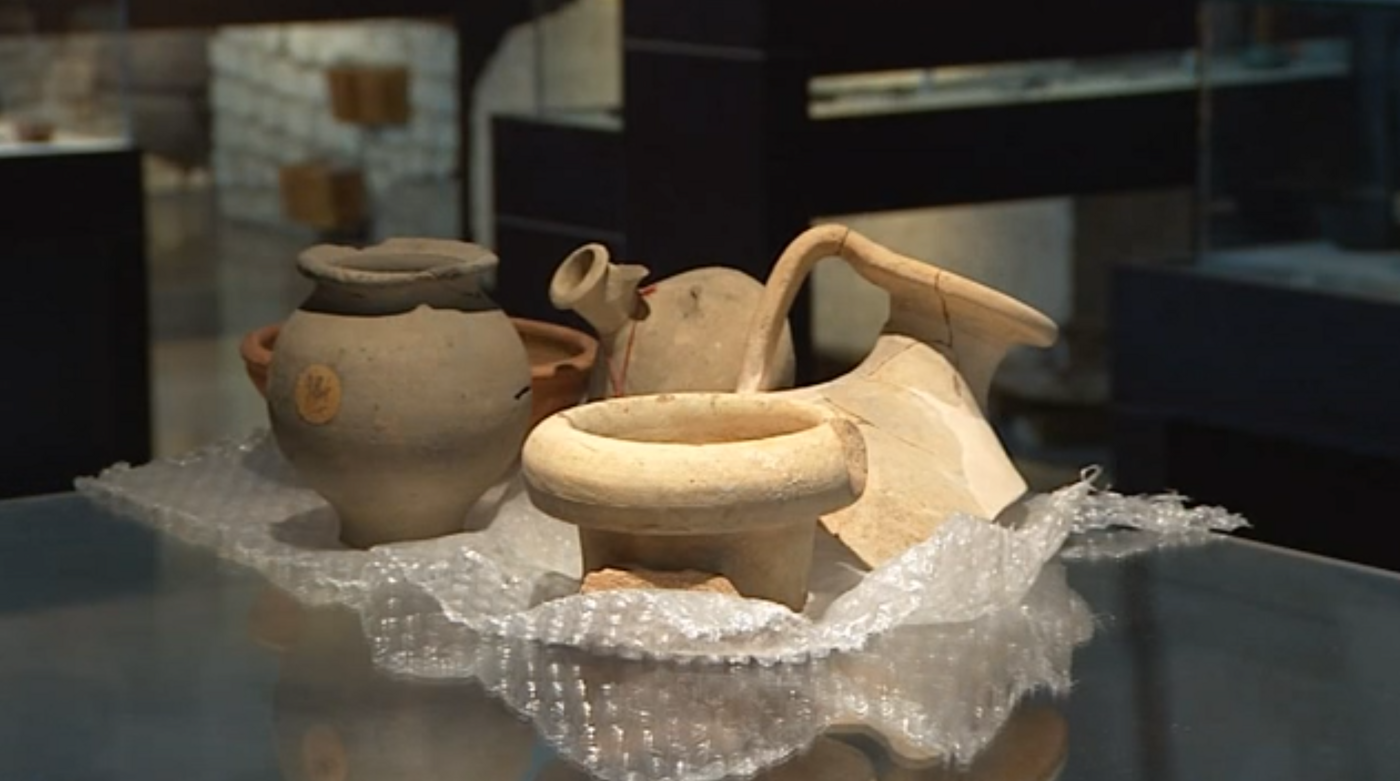The Mandeure sanctuary and theatre
The Mandeure sanctuary was used from the 4th century BCE to the 5th century CE. It contained an exceptionally wide range of offerings and constructions. The theatre, the last remnant of what was once an imposing complex, was one of the biggest in the Roman world and the largest in Gaul in terms of size.
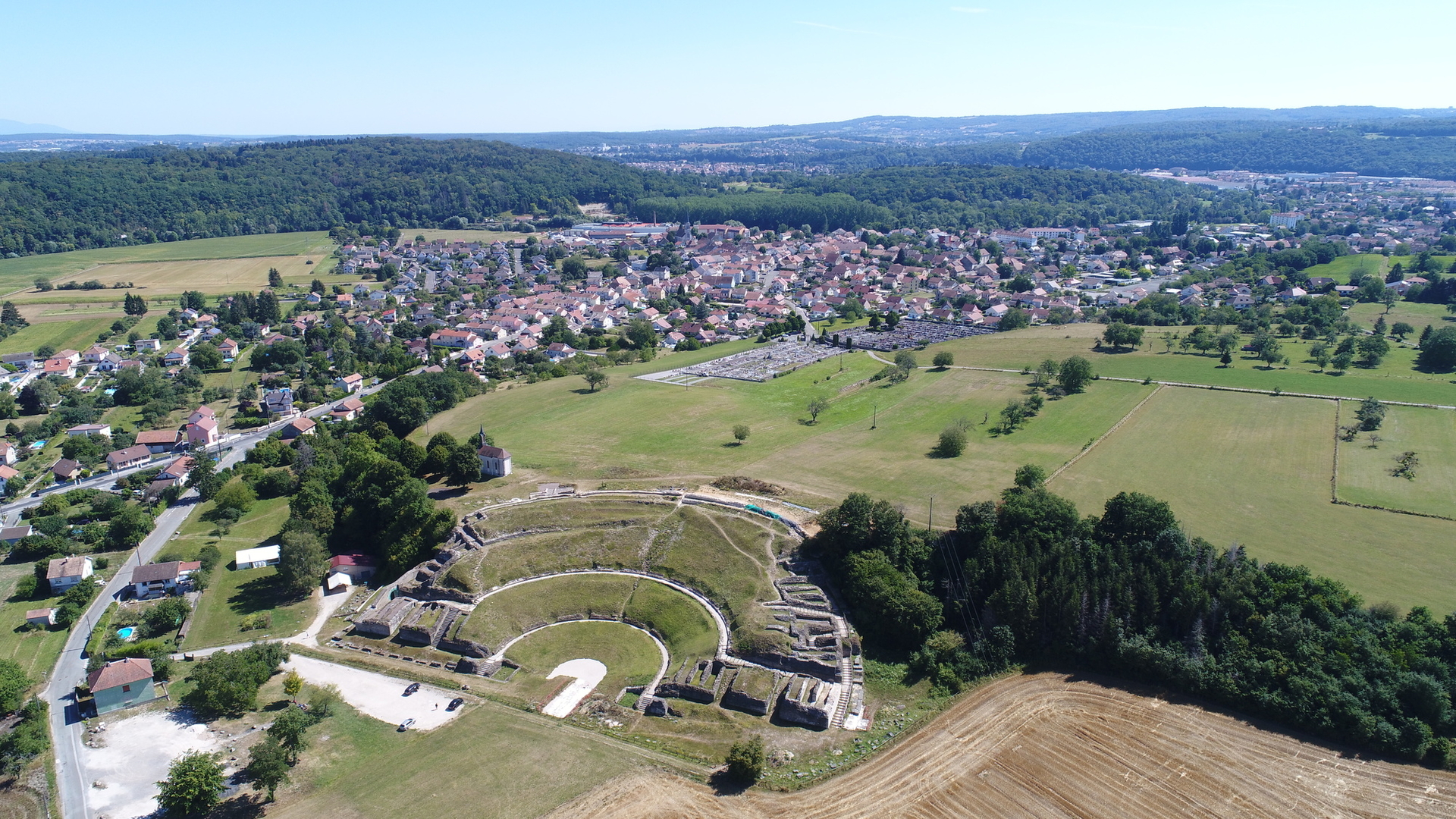
The sanctuary of Mandeure extended over an area estimated at between 25 and 30 hectares, roughly as big as some towns in Antiquity. It was therefore a substantial district of the ancient town, which covered an area of 180 hectares on a bend of the Doubs river.
The sanctuary of Mandeure
The monumental landscape of the sanctuary is largely dominated by the axis between the theatre and the main temple, around which other smaller temples and buildings were constructed. Although the earliest evidence for religious activity, which dates from the Iron Age, does not make it possible to identify the deities worshipped in this sanctuary with any certainty (although it was probably a war-god, most likely Segomo, worshipped in Gaul), during Antiquity the god Mars and the imperial family were the focus of worship. The remains of ten or so colossal marble and limestone statues confirm that many gods were worshipped on this site. The architecture of the main temple reflects the Roman tradition: a canonical plan, Corinthian elevations and Carrara marble decorations inspired by the Flavian Palace on the Palatine Hill.
The theatre is now the only building still visible in the ancient sanctuary. Its ambitious size and the investment required to build it made it one of the largest theatres in Gaul and the Roman Empire. Based on joint field research combined with 3D modelling, archaeologists have managed to reconstruct its elevations and its uses, which were closely linked to the religious ceremonies that took place there.
The archaeology of the sanctuary of Mandeure
The theatre and site were studied by François Morel-Macler from 1820 onwards. (It was one of the first theatres excavated in France, around the same time as the theatres at Orange and Arles were excavated by Auguste Caristie). No research was carried out between the end of the 19th century and the years following the Second World War.
Excavations resumed in the 1950s and 1960s. Between 1964 and 1984 research was conducted by Yves Jeannin, curator of the Musée de Montbéliard. This stimulated the interest of the Bureau d’Architecture Antique de Dijon, which made records and carried out surveys on the site, under the direction of Albéric Olivier in 1983. Archaeological and conservation work was fully supervised from 1988, following the creation of the position of territorial archaeology officer.
In 2001, a new joint research programme (PCR) took a fresh approach to research, combining archaeological excavation, architectural studies and geophysical prospecting. The empty spaces (or squares) and full spaces, which constitute the various buildings of the complex, reveal a sacred topography that makes it possible to reconstruct areas used for sacrifice, procession, assembly or spectacle.
The discovery of the theatre
The theatre and site generally were studied by François Morel-Macler from 1820 onwards. (It was one of the first theatres excavated in France, around the same time as the theatres at Orange and Arles were excavated by Auguste Caristie). No research was carried out between the end of the 19th century and the years following the Second World War.
Excavations resumed in the 1950s and 1960s. Between 1964 and 1984 research was conducted by Yves Jeannin, curator of the Musée de Montbéliard. This stimulated the interest of the Bureau d’Architecture Antique de Dijon, which made records and carried out surveys on the site, under the direction of Albéric Olivier in 1983. Archaeological and conservation work was fully supervised from 1988, following the creation of the position of territorial archaeology officer. In 2001, a new joint research programme (PCR) took a fresh approach to research, combining archaeological excavation, architectural studies and geophysical prospecting.
The research programme
The research programme devoted to the sanctuary and theatre of Mandeure began as a joint research programme (PCR) in 2001 (Université de Besançon), and then in 2010 became a research-based excavation programme (UdS, ENSAS), before becoming an international collaboration between teams of French and American archaeologists (UdS, ENSAS, CNRS-ENS, INSAS, Carthage College Wis.). The site is managed by Séverine Blin (researcher with UMR 8546 Aoroc, CNRS-ENS Paris), who works in conjunction with professors Jean-Yves Marc (Université de Strasbourg, UMR 7044) and Daniel Schowalter (Carthage College, USA), and Pierre Mougin, a regional archaeologist (Sivamm).
The project members take an interdisciplinary approach. Several other team members contribute to the research in the fields of architecture, topography and 3D modelling, which are also central to the study project, including Pierre Assali, Photogrammetry Engineer (Altamétris) and Isaline Paccoud, the architect assigned to the project. Finds research is carried out by university and research centre staff, including Ines Bena, Clémentine Barbau, Laetitia Huguet, François Blondel and Caroline Leblond. Specific programmes related to the epigraphic records or colossal statues discovered on the site have also been developed by professors Cédric Brélaz (Université de Fribourg, Suisse), and Emmanuelle Rosso (Université Paris IV).
Useful information
Visit the ancient sanctuary and theatre of Mandeure: website of the agglomeration of Montbéliard



